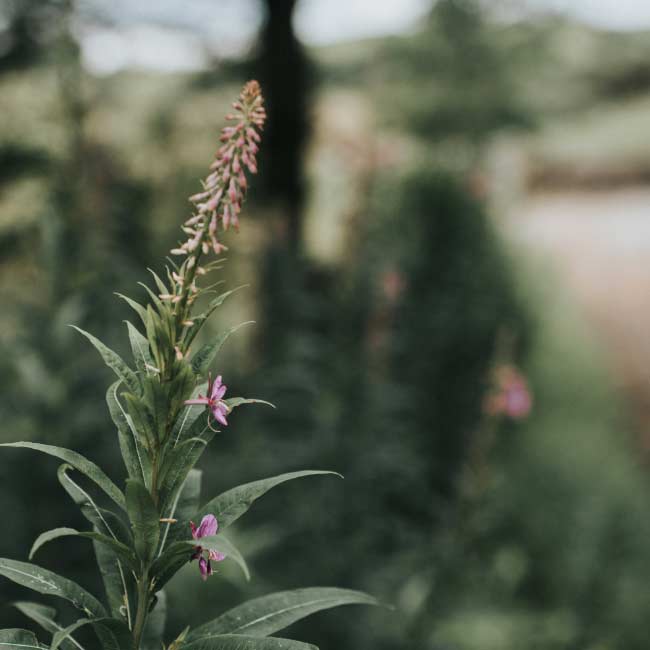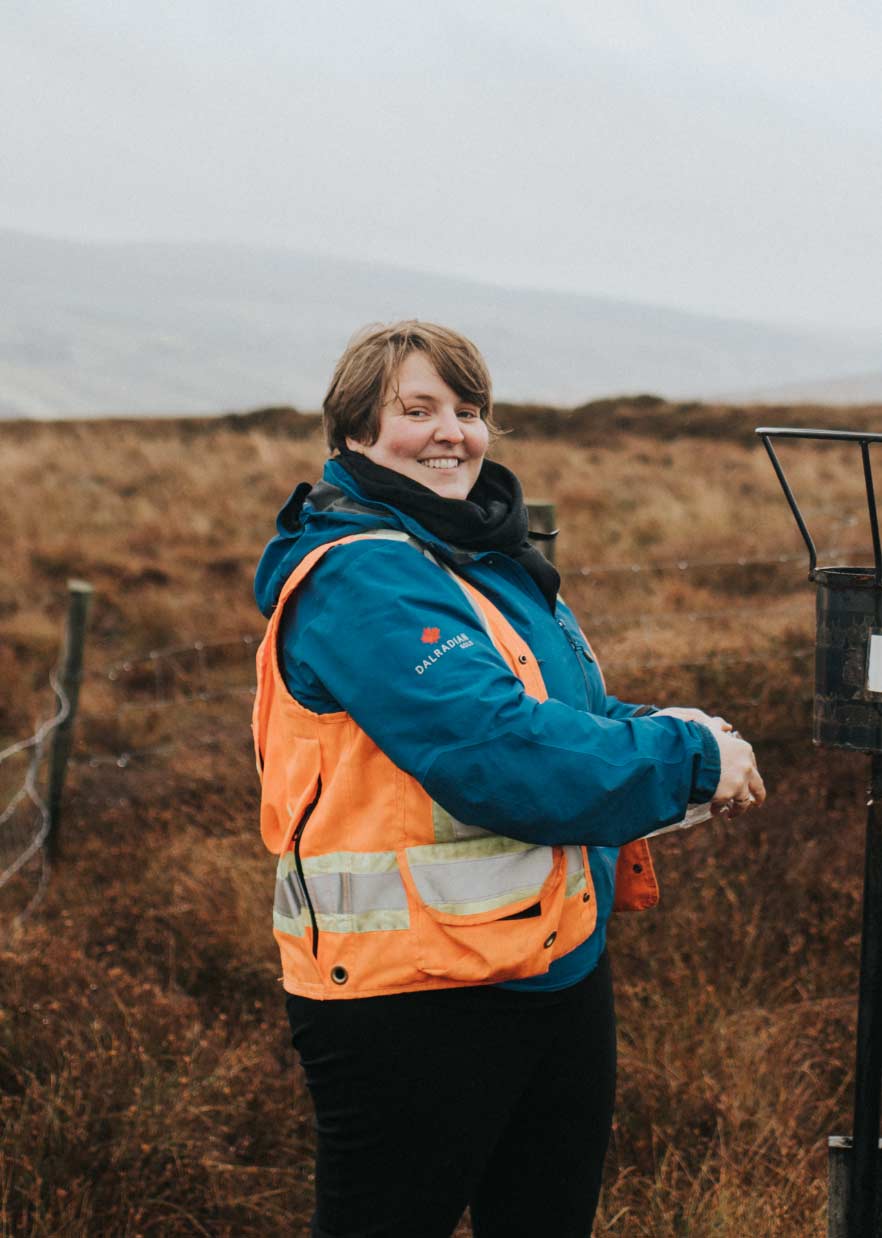
Article
The Project
Dalradian is planning to create a new industry and hundreds of jobs in Tyrone by developing one of the world’s top gold deposits. Each step in that plan is built on a respect for people and the environment.
A unique opportunity
The Sperrin Mountains formed approximately 440-500 million years ago, when ancient landmasses closed in on each other, swallowing up an ocean between them. This collision forced up the mountains of Scandinavia, Scotland and Ireland. In the Sperrins, a complex interplay of rock, water and pressure caused gold, silver and other minerals to condense out of the rock.
The opportunity those resources represent has been waiting ever since.
People have made some efforts to access these minerals in the past. Small particles of Sperrins gold were found in the Moyola River as early as 1652. There were some small lead mines in the area in the early 1900s.
The nature of the Curraghinalt deposit would have made it difficult for early prospectors to access. The veins of gold that run through the rock do not contain large nuggets. Instead, microscopic particles of the precious metal are mixed into pyrite (iron sulphide or “fools gold”).
That might sound unpromising, but our testing reveals an unusually rich deposit averaging 13.5 grams of gold per tonne of rock, which is more than five times the global average for gold mines. The deposit also contains copper and silver, which will be extracted along with the gold.
So, how does Dalradian plan to get them out?
A world-class mine
Dalradian’s planners and engineers have thought about the long term at every stage of designing the mine. We want to leave the landscape in as close to the same condition as we found it. Some change is inevitable – it is the only way that we can unlock the opportunity beneath the ground. But that needs a key, not a sledgehammer.
We intend to tunnel into the hillside to reveal the gold, silver and copper veins. We have extended the pre-existing tunnel network by 1km since our exploration began in 2009. These tunnels have helped us to recover the first bars of gold mined in Tyrone and to demonstrate that our proposed mining methods work well for this mineral deposit.
Most of the mine’s operations will take place underground, but there will be some operations on the surface. These operations play an important role in the mining process, and each one has been designed to minimise their effects on the landscape.
Water treatment plant
The underground mine workings will open rock that holds groundwater, some of which will be used in the operations. Treating all of the water from the site is essential to preserving the quality of the nearby Owenkillew and Owenreagh rivers. Dalradian, through the Tyrone Fund, has already invested in protecting the endangered freshwater pearl mussel.
We will be self-sufficient for the water we use in processing the mineralised rock. We will collect rainwater and groundwater that we recover from the mine for processing. This water will be carefully recycled.
The project will use a purpose-built mains supply for potable water for kitchens, showers and toilets. We are working with Northern Ireland Water to ensure that the existing network can accommodate this supply.
Some water will be discharged in compliance with a licence from Northern Ireland Environment Agency (NIEA) from the water treatment plant to the environment. Our environmental team will monitor a range of measures of water quality; our current water discharge consent specifies 16 aspects, including sediment content and pH balance. Dalradian’s current exploration site, which include a smaller-scale water treatment plant, meets or exceeds all of these requirements, which is verified by independent testing and site visits by the NIEA.
The project, when it is built, will use a cutting-edge water treatment system with a reverse-osmosis plant, the best technology available. It will continuously monitor discharge water quality, in a similar way to the system used at our exploration site. It will automatically shut down if levels approach the maximum limits set out by the NIEA.
Processing plant
Dalradian intends to partially process the mineralised rock on site. That requires a small processing plant to break up the rock and extract the metals. No cyanide will be used in this process. Instead, the gold-bearing ore will be concentrated into a damp metallic sand and sent for further processing abroad.
Only material from the mine site will be processed here.
Many of the metals we extract occur as sulphides – gold sulphide, silver sulphide and copper sulphide. These compounds produce acidic run-off when they are exposed to air and water. One of the advantages to our process is that it removes the metals – and therefore the sulphides – from the rock. That means the material we return to mine’s tunnels and store in the dry stack tailings facility cannot create acid, which can have a negative impact on water.
We will site the processing plant buildings carefully to fit in with the landscape - the buildings will be painted green and designed to match the local style of agricultural building.
Dry stack tailings facility
We have a plan to deal with the rock left over from the gold extraction process, material known as “tailings”. About half of the tailings will be returned into the ground to backfill and reinforce the tunnels. The remainder will be stored in a dry stack tailings facility, recognised as best practice for modern mines. This is an engineered mound of crushed, compacted rock, coarse and fine material that will be progressively enriched with topsoil and planted. This approach ensures that the tailings are stable and that the rehabilitation of the landscape occurs throughout the life of the mine. It is not a spoil tip, where tailings are dumped in an uncontrolled heap. It is a landscaped feature, just like an embankment or a canal. It is designed for stability and based on well-understood principles of landscape design. The final shape of the facility is designed to fit with the local landscape of rolling hills.
Carbon neutral from day one
We have designed the project for life in a low-carbon economy. Our aim is for it to be Europe’s first carbon neutral (net zero) mine. We will use electric vehicles and biodiesel wherever possible. A network of electrically powered conveyor belts will move material around the mine and the processing plant. We have committed to minimise our emissions going forward through an annual carbon management plan and offset the remainder via carbon offsetting to render our operations as net zero carbon (i.e., carbon neutral). Indeed, Dalradian has already achieved carbon neutral status for 2019, an important milestone toward delivering on our commitment for the mine. This is a modern mine in keeping with government targets for carbon neutrality by 2050.
What is carbon neutrality? Watch the video >
Each of these measures has been designed specifically to ensure that Tyrone can unlock its natural resources in a way that is environmentally responsible.
It’s time for Tyrone
Ireland is home to several modern mining projects that have enhanced the lives of local people. Lisheen, in Co. Tipperary, hosted a zinc and lead mine from 1997 to 2015. Its effect was to provide training, well-paid employment and social dividends for the local community. A responsible closure plan, built into the design of the project, left an unspoilt environment and valuable infrastructure that supports new job opportunities.
The people of Lisheen benefited from more employment, a boost to local suppliers and the mine’s investments in the local school, community centre and athletics / GAA clubs. It’s time for Tyrone to realise the same benefits.
Careers and training
Dalradian’s project will require 350 permanent, full-time employees. We anticipate that more than 90% of our staff will come from the region around the mine based on the experience of other operating mines around the world. They will work in a number of roles and we have partnered with South West College to ensure that local people have the skills to fill them. We are developing a £15 million training programme that will coincide with the mine’s two-year construction period and its first full year of underground operations.
The new mine will stimulate employment growth in other sectors, too. Local suppliers are already receiving orders to supply the project, boosting their capacity to hire new workers. The money they generate is being spent in other local industries – shops, restaurants and accommodation.
Already, Dalradian has provided direct employment to around 200 people. We have purchased goods and engaged the services of more than 400 Northern Ireland suppliers. Fifty of our partners are small businesses from our neighbourhood – Greencastle, Rouskey and Gortin.
Dalradian intends to invest over £750 million in the local area over the 20-year life of the project. In the process, we will help hundreds of local people start new careers that will serve them for life. Mineral exports will provide a new industry for Northern Ireland, and support the continued growth of sectors such as advanced manufacturing and materials handling.
Putting people first
Dalradian plans to spread the benefits of the project as widely as possible within the local community and across Tyrone. That’s why we established the Tyrone Fund. Already, Dalradian has donated over £800,000 to local community groups. This money supports work in environmental protection, arts, sports and education. The Tyrone Fund will grow throughout the life of the mine – rising to a minimum of £4 million. Keep an eye on our social media for news on our next round of applications.
Transparency and dialogue
Dalradian’s planning application has not yet been approved. It is anticipated that a public inquiry will be called during 2020, which we fully support. Northern Ireland’s Department for Infrastructure is receiving feedback from the community and we are too. In August 2019, we submitted a Further Environmental Information (FEI) document to the Department of Infrastructure. We have received feedback throughout the planning process, and this document outlines the enhancements that we have made in response.
You can read our planning application at the Department of Infrastructure website, then get in touch with your thoughts. You can get answers and ask questions on our FAQs page, reach us on social media, or drop us a line on our contact page. Together, we can make the mine work for everyone.


Your support matters
Support our plans to create jobs, strengthen the local community and respect the environment. The Department for Infrastructure will take your views into account. Help make our plans a reality.
Your letter of support will be sent directly to the Department for Infrastructure. Dalradian will not see your letter, nor any of your details.
Great things can happen with your support
Support our plans to create jobs, strengthen the local community and respect the environment. The Department for Infrastructure will take your views into account. Help make our plans a reality.
Customise a letter of support in two simple steps:
Provide your personal details
This will signal your support to the Department for Infrastructure. You can choose to keep these details private.
Tell the Department for Infrastructure why you support the project
Please tick all the elements you like about the proposed project.
Dalradian will not see your letter, nor any of your details. Your letter of support will be sent directly to the Department for Infrastructure
